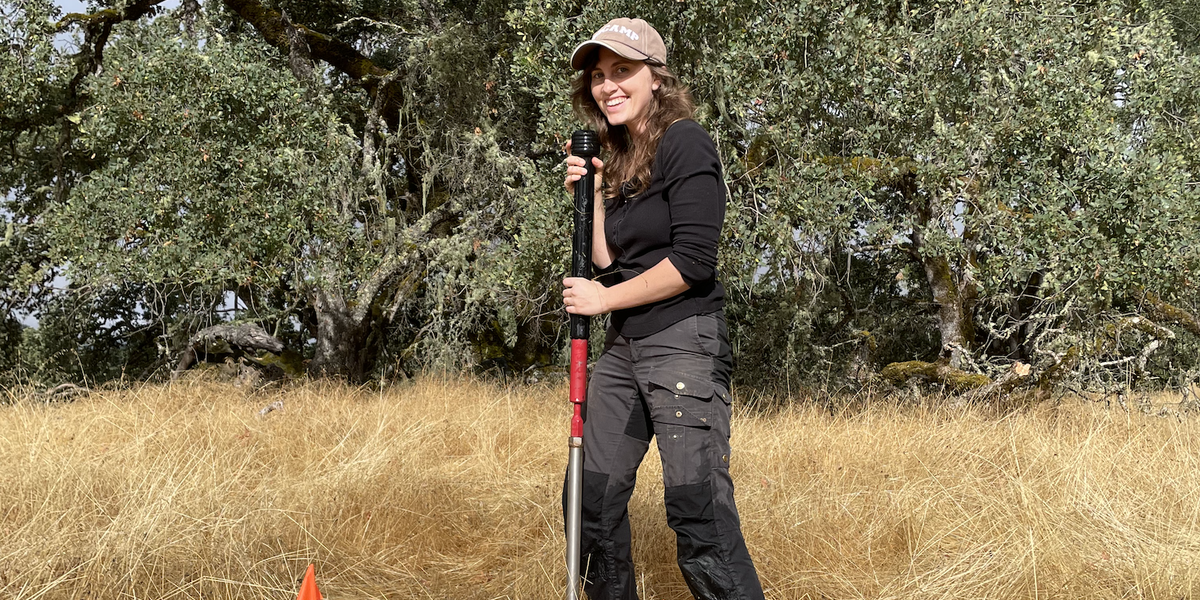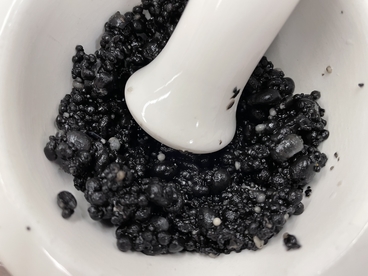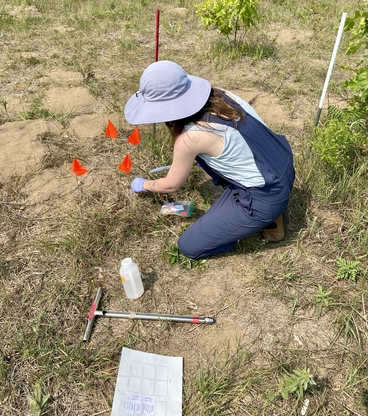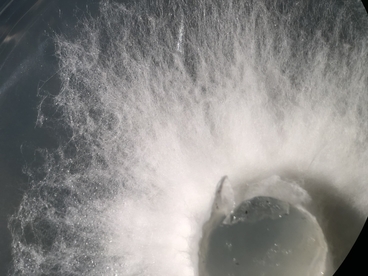
Fungi are inextricably linked with death and decay. With microscopic filaments called hyphae that grow through tiny spaces in the soil, fungi are able to reach far and wide in search of nutrients, feasting on and decomposing organic debris on the way. So what happens when fungi, an agent of decay, meet their end?
“Fungi produce lots of hyphae while they’re foraging. And then when they die, they become part of the fabric of soils,” says Dr. Katilyn Beidler, a post-doctoral researcher in Dr. Peter Kennedy’s lab. Soils store more carbon than the air and plants combined and most of this carbon is found in dead and decaying plant, animal and microbial matter.

“It’s important to understand what happens to these below-ground fungal bodies because they make up most of the carbon that sticks around in the soil, literally. Fungal hyphae live and die next to soil minerals and sticking to clay minerals can physically protect fungal cells from being recycled by other microbes.”
Investigating the breakdown of dead microbes, collectively called necromass, could lead to a better understanding of carbon cycling. But thin threads of fungi spread diffusely through soil can be difficult to track. So Beidler grows it herself en masse. The microbial orbs look like tapioca pearls as they float, suspended in a flask filled with liquid culture.
“We grow enough biomass to be able to measure its decomposition over time and the species we grow have traits that could be important for carbon storage.”

Beidler packs the freeze-dried clumps of necromass into mesh bags, buries them in the soil, and waits. But not for long. In a recent experiment she led at Cedar Creek Ecosystem Science Reserve, a College of Biological Sciences field station, Beidler resurrected buried samples from their sandy graves for investigation after only two weeks. Most of her samples lost about three-quarters of their biomass. So if the necromass was secure in the mesh bag, what happened to the mass? Exposure to elements accounts for some of the loss. When it rains, water floods the soil and soluble materials like sugars flush out of the bags. The rest likely comes down to other microbes.
“Another aim of our research is trying to identify the decomposer communities, so the microbes living on the dead fungus,” says Beidler. “Fungal necromass is decayed by a unique and diverse community of bacteria and fungi which might differ depending on the chemistry of the necromass itself.”
What remains of the mass is stubborn material most resistant to destruction. One chemical trait that could play a role in the rate of necromass decay is a complex molecule found in the cell walls of pigmented fungal species: melanin.

“Similar to the melanin in our skin, it has a protective function for fungi,” says Beidler. Melanin protects living fungi from exposure to UV and can also be a physical barrier that keeps water in and pathogens out of fungal cells. “We found that melanin has these interesting afterlife effects, in that it's an important predictor of decomposition of fungal necromass. Fungi with more melanin in their cell walls decay more slowly.”
It can be difficult to untangle what decomposition happened due to the environment—from precipitation and soil composition, for example—or from other organisms. Beidler’s team can identify the decomposers by analyzing the DNA in the remaining necromass. She also measures changes in necromass chemistry through time.
But even if other organisms take up nutrients from necromass cells, what happens to those organisms? And is the carbon in the remaining necromass actually stable? Will it stick around?
“It is all very circle of life, with living microbes recycling the carbon and nutrients contained within dead microbes,” says Beidler. “Ultimately I am interested in how necromass becomes stable soil carbon and how the traits of living and dead fungi influence this transformation.”
—Adara Taylor